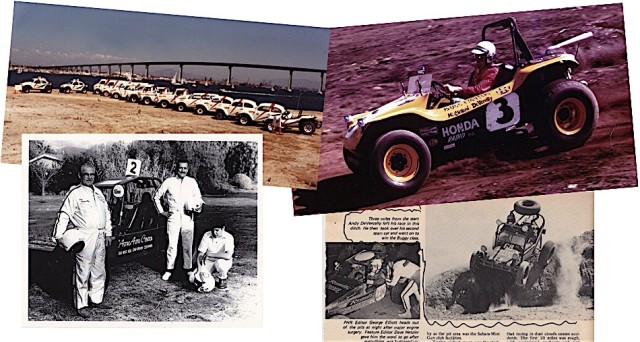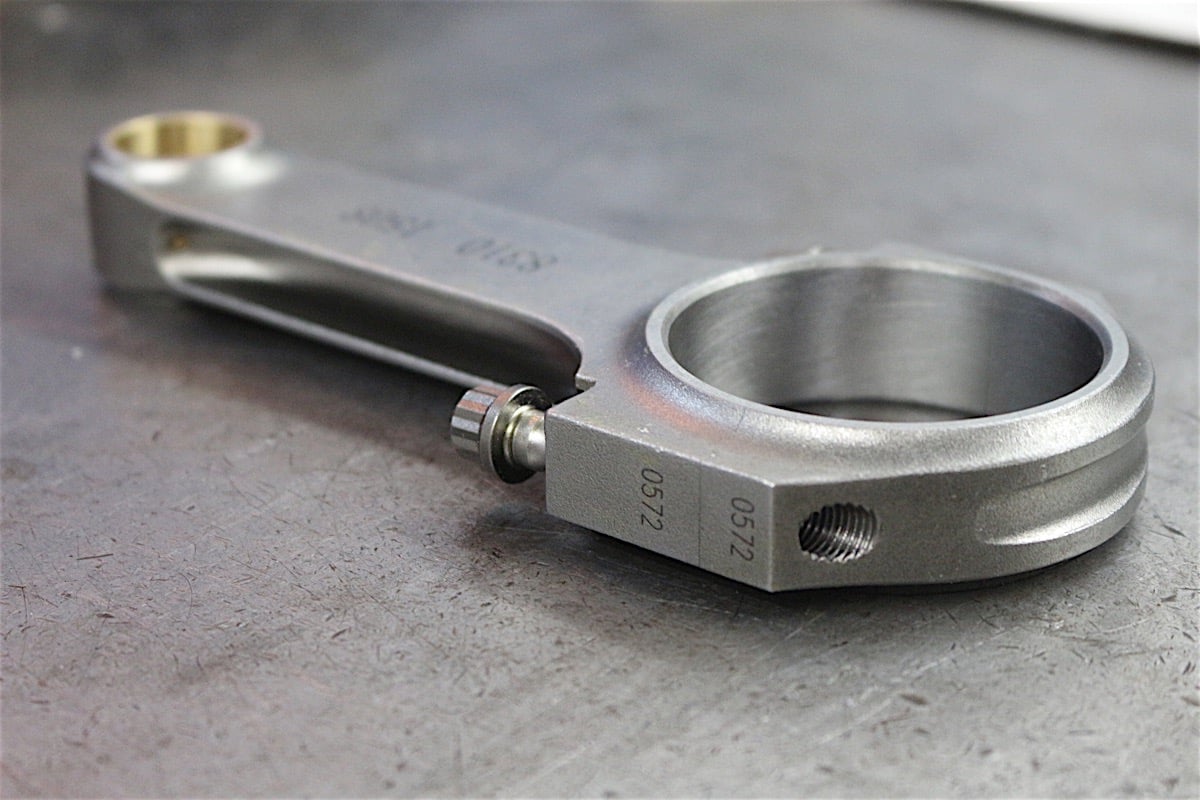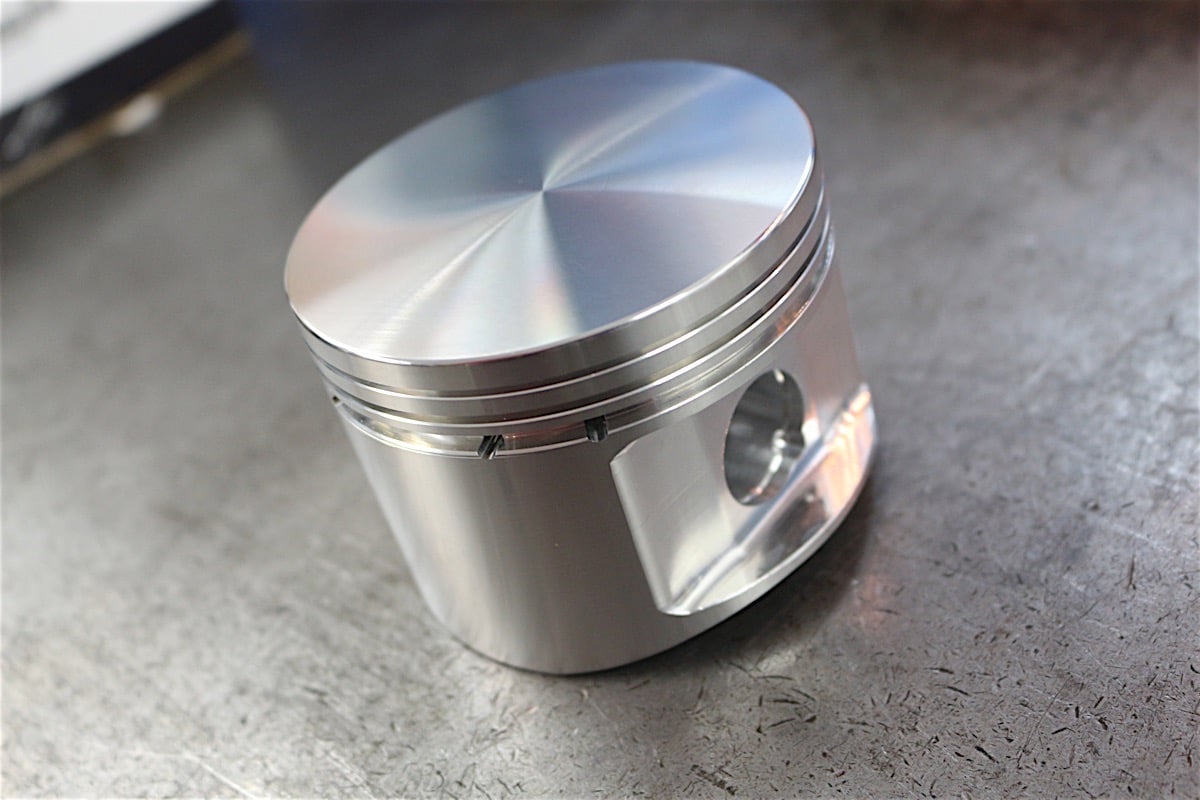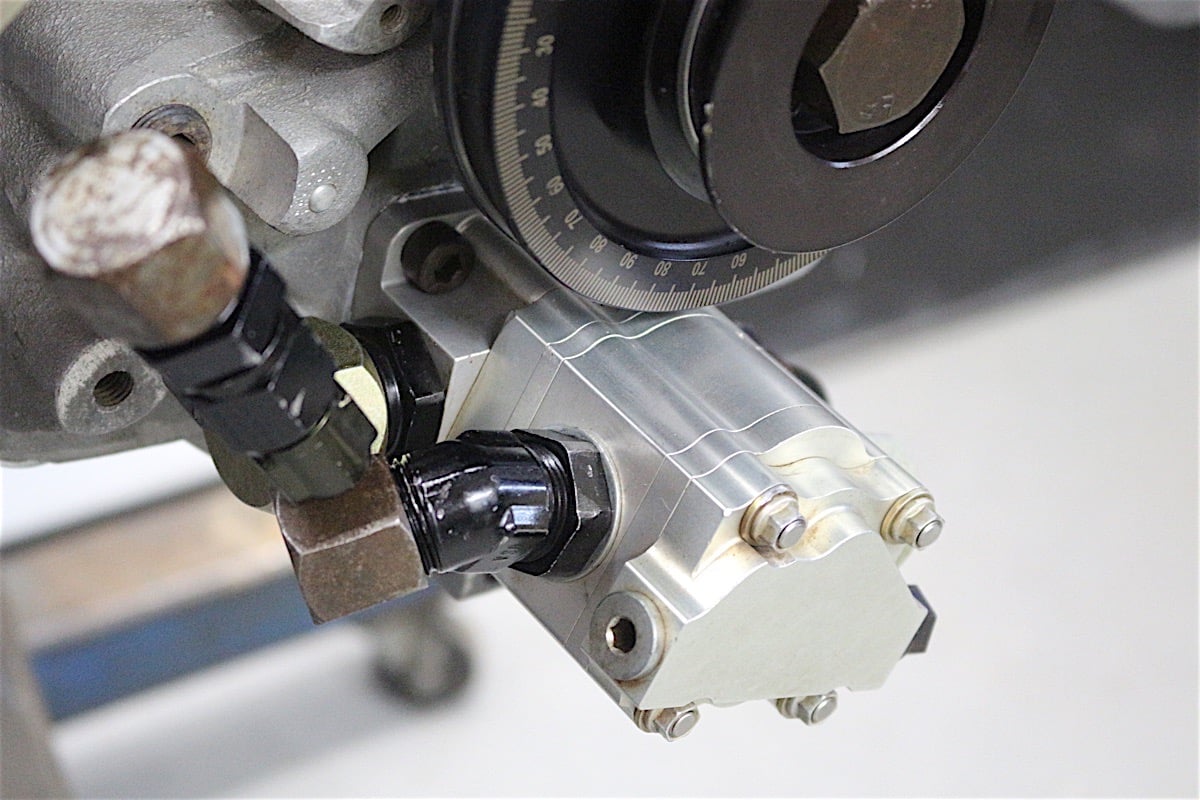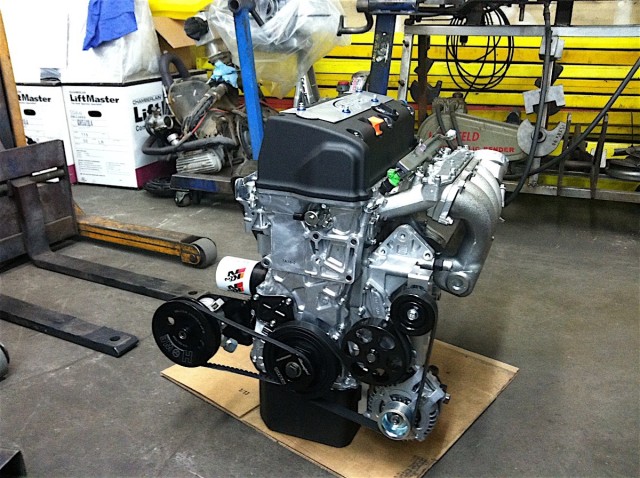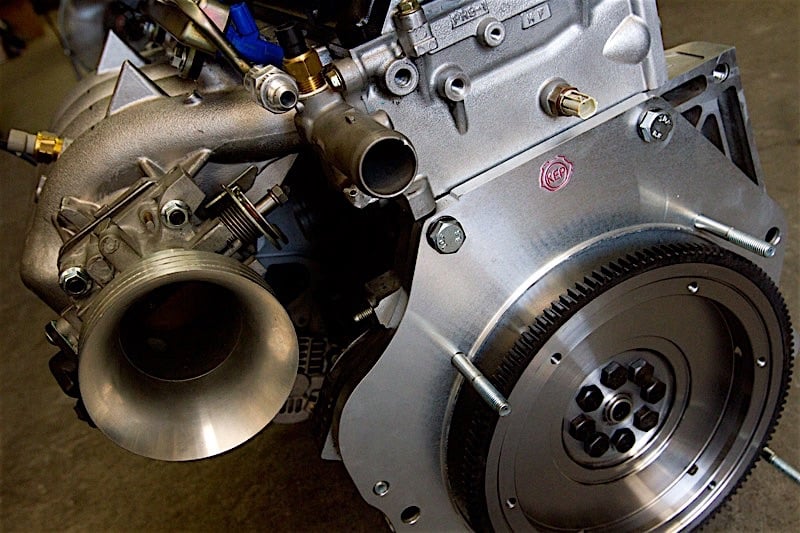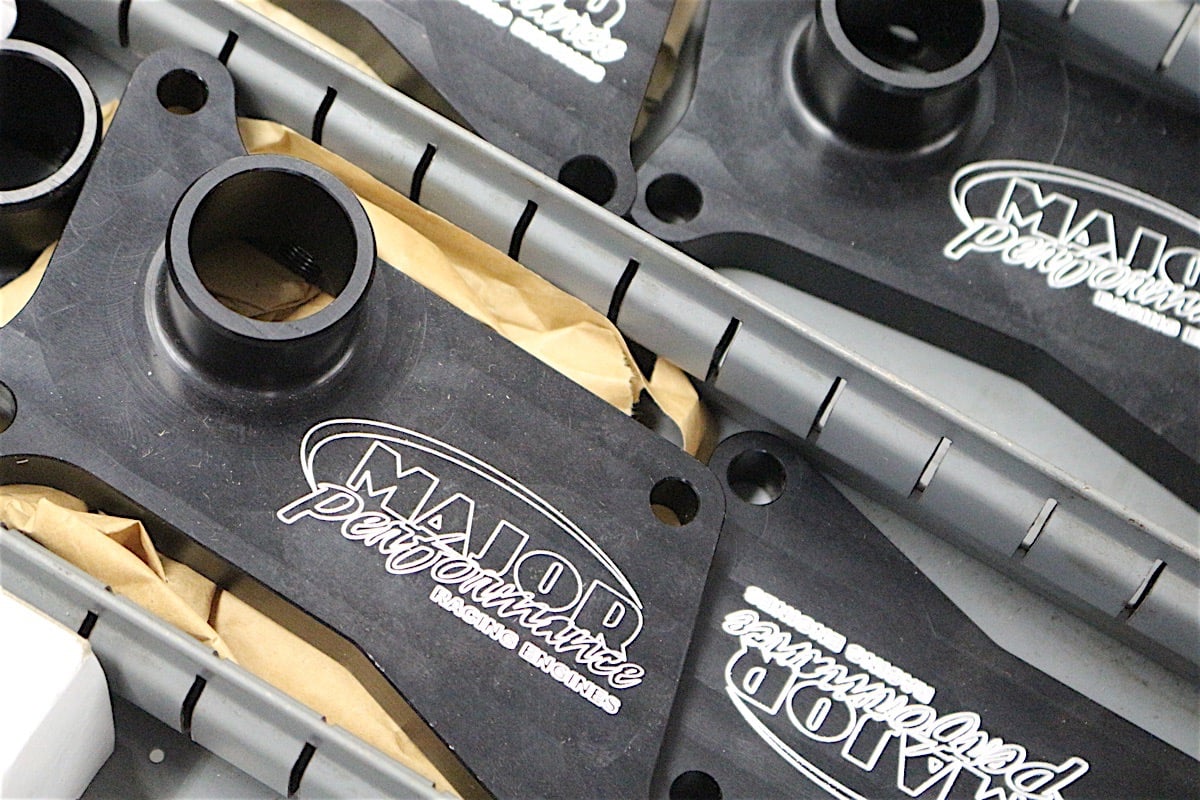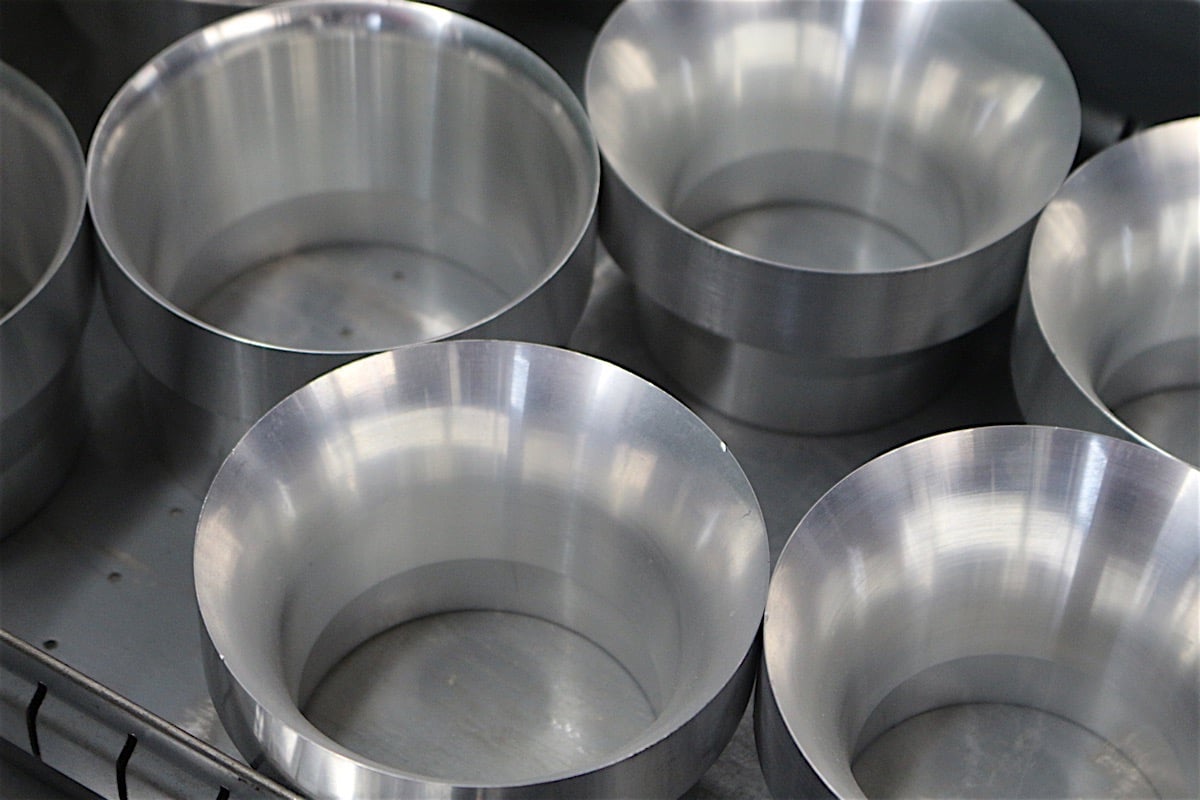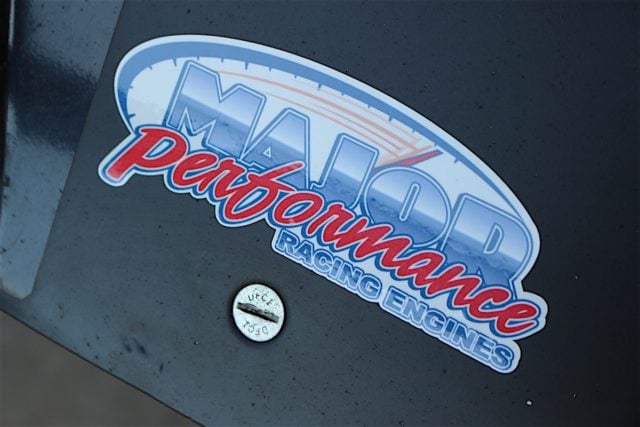 [1]Motorsports have plenty of niche communities, inside of which we have hometown heros, acclaimed winners and legendary builders. Every now and then we get to page through the history books and learn what lead us to where we are in the present. This time we pay a visit to Southern California’s Major Performance Racing Engines [2] – a household name for desert racers from in California, Nevada and Arizona, to south of the border.
[1]Motorsports have plenty of niche communities, inside of which we have hometown heros, acclaimed winners and legendary builders. Every now and then we get to page through the history books and learn what lead us to where we are in the present. This time we pay a visit to Southern California’s Major Performance Racing Engines [2] – a household name for desert racers from in California, Nevada and Arizona, to south of the border.
In The History Books
The Major Performance contingency sticker can be found on scads of winning off-road racecars, their recognizable (usually blue) fan shrouds are easily spotted from a distance on air-cooled platforms well-suited to the demands of desert racing.
“Kenny [Major] started this business in his house in the mid ’80s. He got to be friends with Mike Mendeola, Mike said ‘hey you have a potential way of making a good living’ and talked Kenny into becoming a full-time engine builder. Mike wanted to get out of engines because he wanted to focus on transmissions and sold Kenny his old lathe, mill and everything,” prefaced Andy DeVercelly IV.
The DeVercelly name is yet another household staple if you’ve been around desert racing for any amount of time. Winning and placing in just about every race that matters (multiple times) over the past half century of racing in Mexico and the U.S.
“My great-grandfather, and grandfather both raced the couple first Baja 1000s and stuck with it through the years because they loved it. Then I started racing when I was young, and of course I wanted to do it having been around it as a kid,” DeVercelly explained.
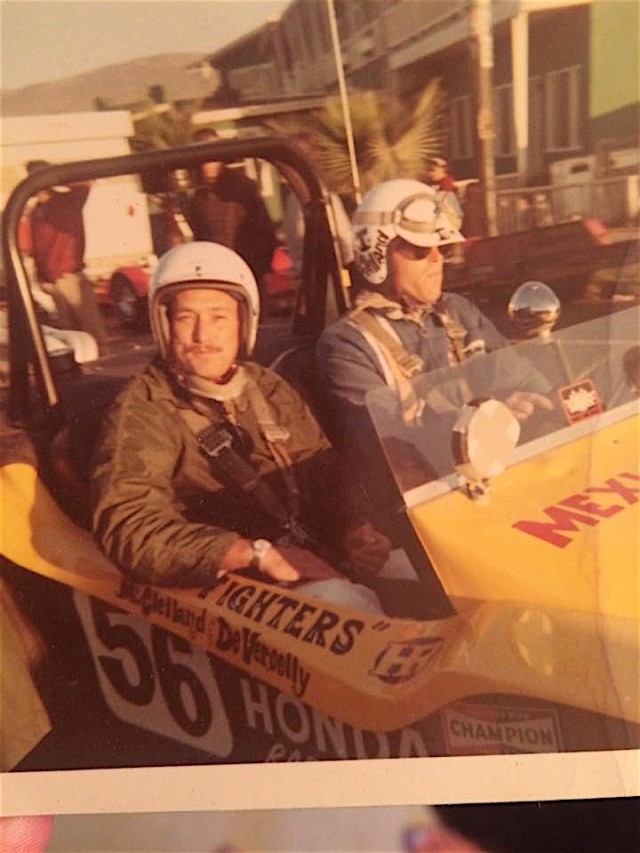 [4]Andy is the fourth of his namesake in the biz of going fast on dirt, those who have grown up in a family dedicated to any form of motorsport can understand how the addiction is passed genetically. DeVercelly grew up around the sport and has teamed with multiple well known racers to provide driving duties. As for how he got into building championship winning engine packages specifically for beloved open-wheel classes, it’s a story of following a passion.
[4]Andy is the fourth of his namesake in the biz of going fast on dirt, those who have grown up in a family dedicated to any form of motorsport can understand how the addiction is passed genetically. DeVercelly grew up around the sport and has teamed with multiple well known racers to provide driving duties. As for how he got into building championship winning engine packages specifically for beloved open-wheel classes, it’s a story of following a passion.
“I went to work for Kenny when I was in high school around the year 2000. It was one of my first real jobs, I knew I liked racing and I took a liking to engines. I worked there off and on while I went to school and finally in my mid-twenties I decided I wanted to do this. It took me a few years to really get it down, and then the next step was getting the business,” he explained.
“Unfortunately 2008 came along, we used to have over 25 engines per SCORE race before that, lining up out the door after each race. I ended up buying this place from him in early 2011, it wasn’t easy but we’re still here and I’ve built our customer base. I’ve learned a whole lot in the school of hard knocks of business.”
The Engines
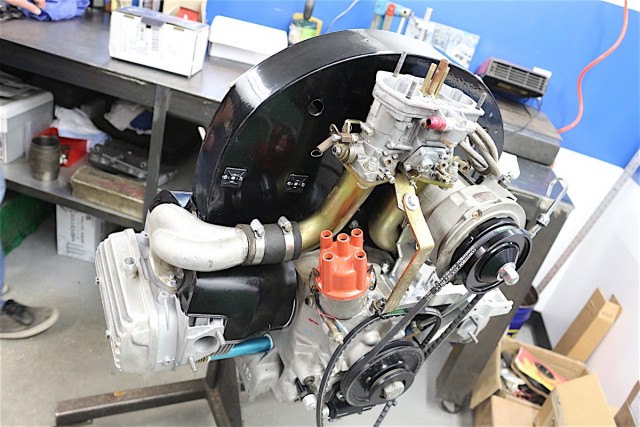 [5]
[5]The low-compression VW Type-1 engine option for class 12 limits builders to stock intake end castings, a Weber 44 IDF with 34 mm venturis, no plenum manifolds and a lower compression ratio.
Throughout the tenure of Major Performance, air-cooled VW engines have been the bread and butter. Limited and unlimited buggy classes continue to employ the simple and rugged platform, from the first Mexican 1000 in 1967 to present day.
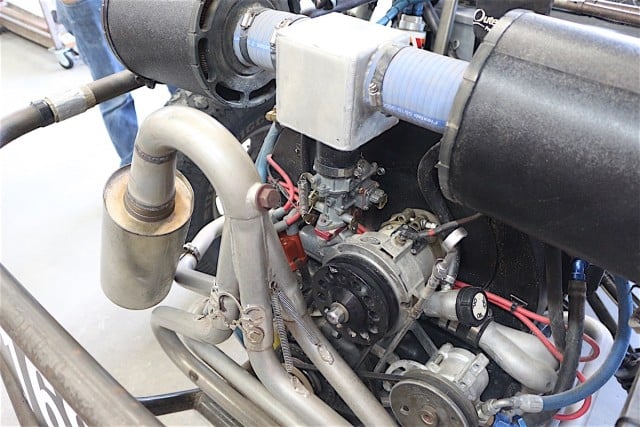 [6]
[6]1600 cc engines are still the most common race platform Major Performance produces, powering huge fields of 1/2-1600 and 5/1600 racecars.
It’s a common sentiment today to look down on the old technology of these humble engines, but they are often underestimated. The attention to detail that goes into building them to survive the longest non-stop point to point race in the world is just as advanced as the most exotic Trophy Truck engine.
One example of how the flat-4 has been pushed to it’s limits and then tempered back is the VW Type 1 program developed for Class 12 buggies.
“The original package included a plenum intake, small displacement, high compression. After the recession hit us engine builders got together to figure out a way to keep selling engines and show people that you don’t have to have a radical VW you have to spend thousands on each race to keep going,” DeVercelly detailed.
“We came up with a 2.1-liter that will run on pump gas and the maintenance costs will be a lot less. I had just bought the business from Kenny and pushed this through, we engine builders put our egos aside and submitted this package to [Bill] Savage (former head of SCORE tech) and he signed off on it.”
DeVercelly explained that this change was for the budget-conscious but also improved drivability immensely, building power and torque under the curve rather than prioritizing peak output. To construct these engines DeVercelly uses components you would expect in any more common V8 build; JE Pistons, Manley valvetrain, a chromoly crank, custom cylinder heads, H-beam rods, Dailey Dry Sump systems and locally R&D and ground custom camshafts. As DeVercelly put it; “like any engine builder I have my own concoction that works. I’ve refined them as I’ve done a few.”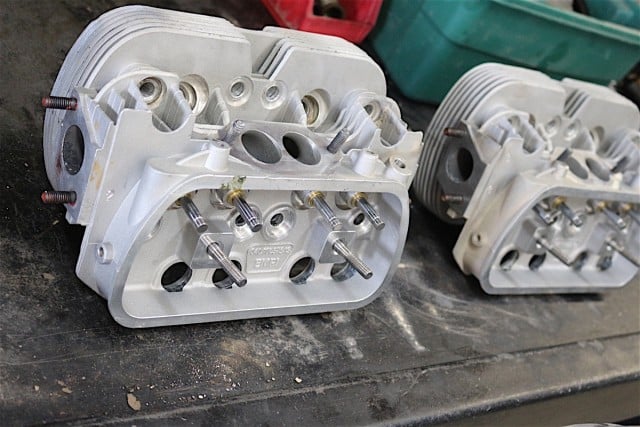 [11]
[11]
The secret to pairing reliability and performance for grueling race conditions? “It all comes down to machine work and blueprinting. Any engine you build, no mater if it’s stock or a race engine you have to do those steps to make it work right,” he alluded.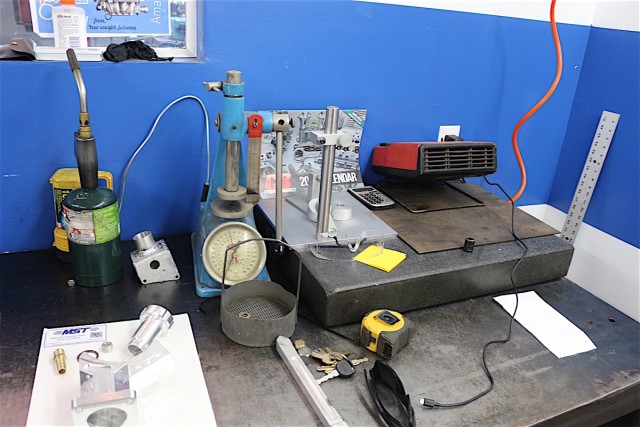 [12]
[12]
The Modern Racer And Sealed Engines
In the past we have had a look at the politics of sealed engine racing with Danzio Performance [13], with the GM EcoTec platform being the focus. Major Performance has been pioneering the same sort of engine program albeit from a platform from across the globe. The Honda K24 engine has enjoyed great success in motorsports, even to the point of being sanctioned out of rule sets in some cases.
People didn’t believe us, and then when they saw how fast we were going [with Honda engines] it made things even worse for me. -Andy DeVercelly IV, Major Performance
“I put my eggs in the Honda basket because it’s what I felt made sense. We did Honda engines for 15 years and already had them figured out. I did my research, I got an EcoTech engine and looked at it, I got a Honda and looked at it. The conclusion I made was ‘why wouldn’t you buy the Honda?’ It’s a way better engine from the factory, forged crank and rods, roller valvetrain, patented V-Tec and adjustable cam-timing. You were able to make the non-stereotypical Honda power curve. You could have lots of drivability and low-end torque and still have that 7,500 rpm horsepower.”
Andy DeVercelly developed many custom parts for the K24 to meet the needs of desert racers.
Claims To Fame And The Future
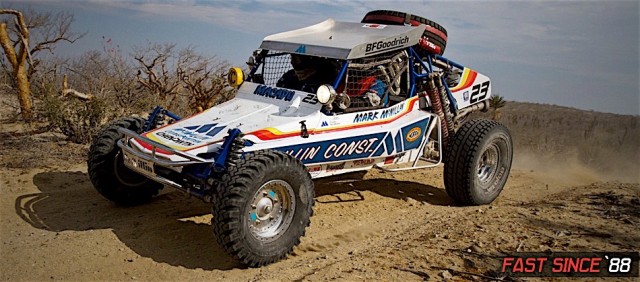 [19]
[19]Major Perfromance takes on other projects too, like the flat-6 Porsche that powers Mark McMillin’s vintage Chenowth.
A lot of famous teams and drivers have been associated with Major Performance; “We won four or five SCORE engine builder of the year trophies, and accomplished a lot back in the heyday. Kenny actually had Jimmy Johnson working for him. He was friends with Jimmy’s dad and Jimmy used to work there as a kid before he went to be a professional driver. Jimmy Johnson was the tear-down engine kid at Major Performance!” DeVercelly recalled.
Despite percieved waning interest in so-called antiquated air-cooled engines, Major keeps taking on new and returning racers. The surge of sealed engines and UTV racing has been marred by expensive electronics and management packages and crazy aftermarket investments required to be competitive.
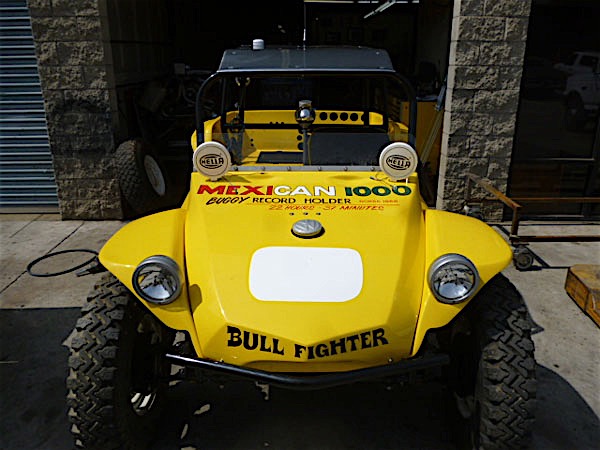 [20]
[20]The “Bull Fighter” Meyer’s Manx the DeVercelly family made history with was restored to run the revived NORRA Mexican 1000.
“This is the busiest I’ve been since I bought the business, I think because it’s the 50th year of off-road racing (the Baja 1000 anniversary), and there’s people wanting to get back to racing or do it as a bucket list thing. I think people have really evaluated costs and the whole UTV thing is pricing itself out of this market,” DeVercelly hypothesized.
“People are starting to look back at the grassroots classes. It’s maybe not the most appealing now a days, because it’s old-school, but it’s realistic. They can spend $20K on a car and put $10-15K into it and have a wining race package that’s a blast to drive.”
